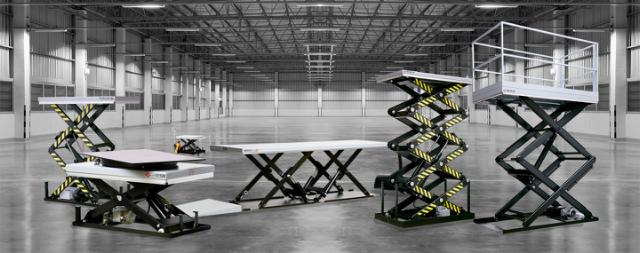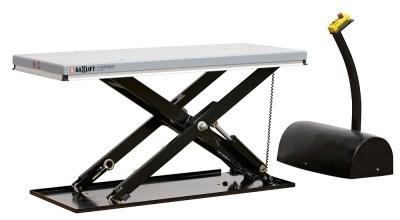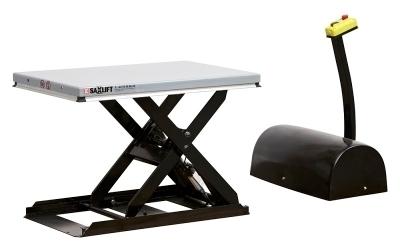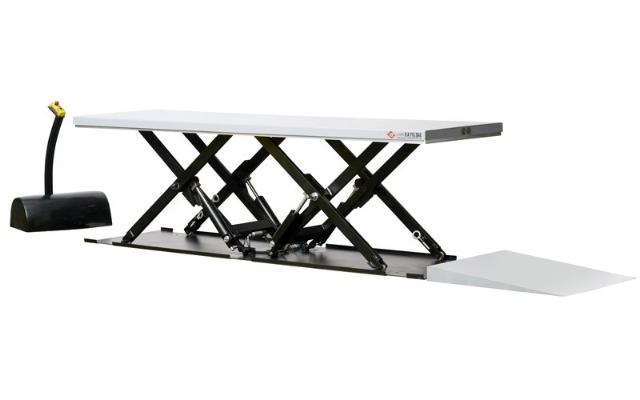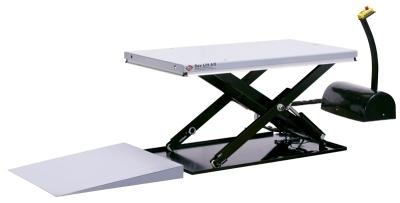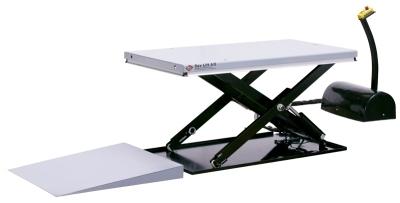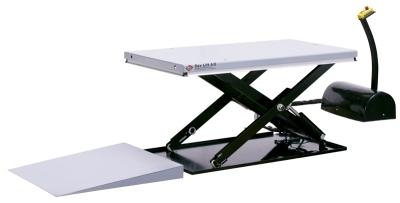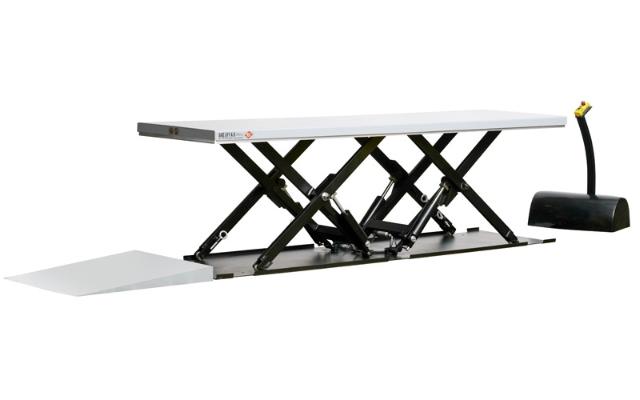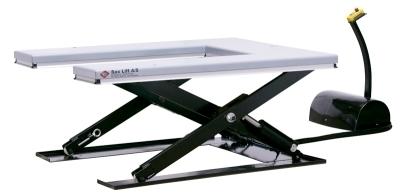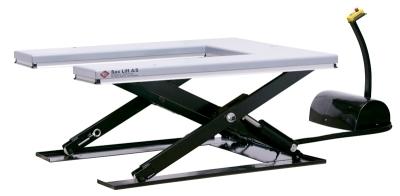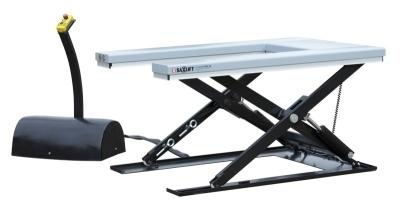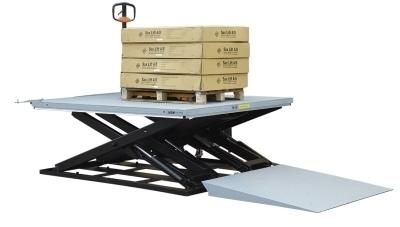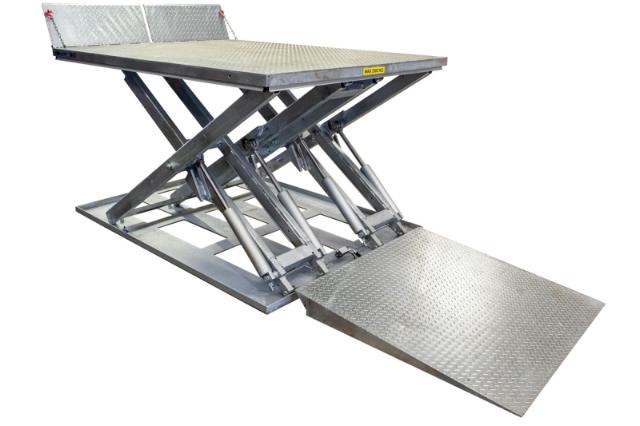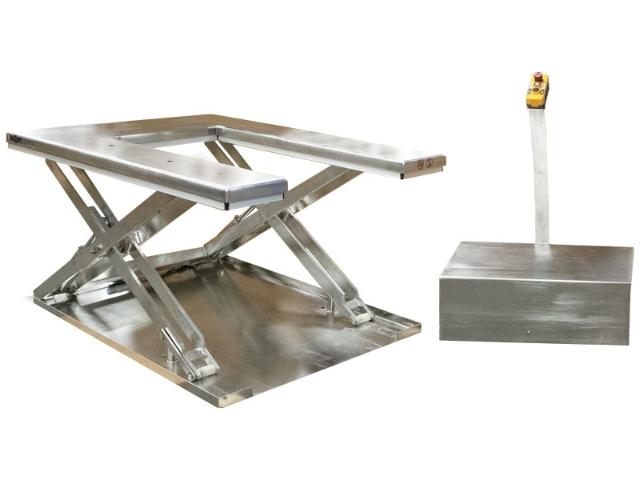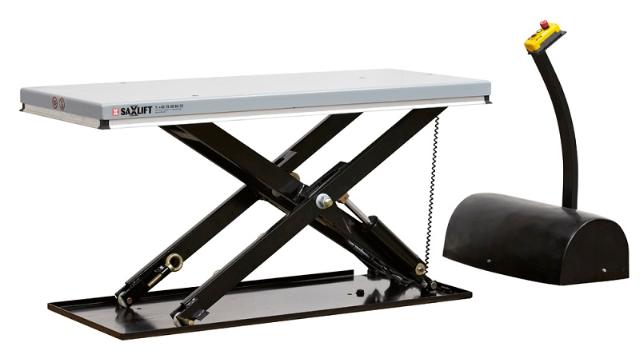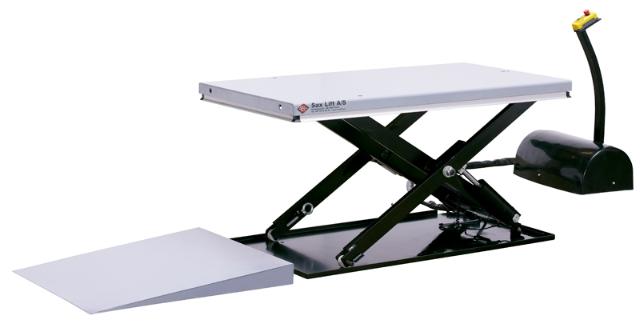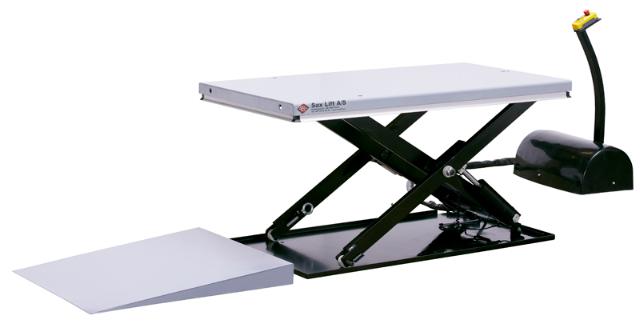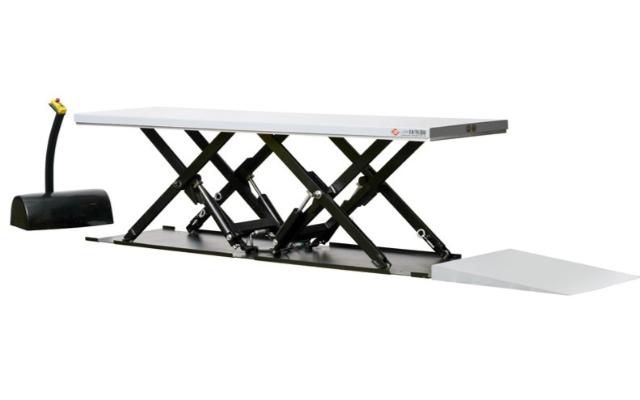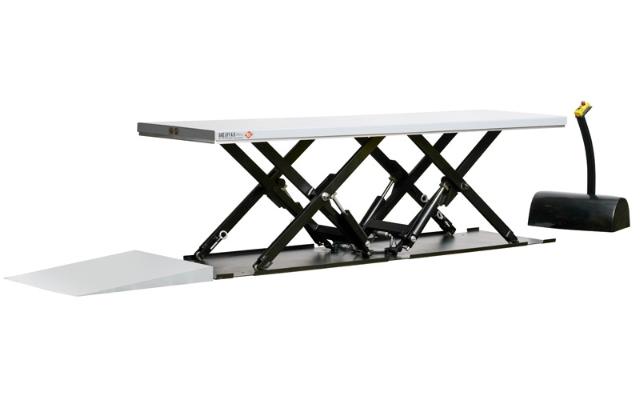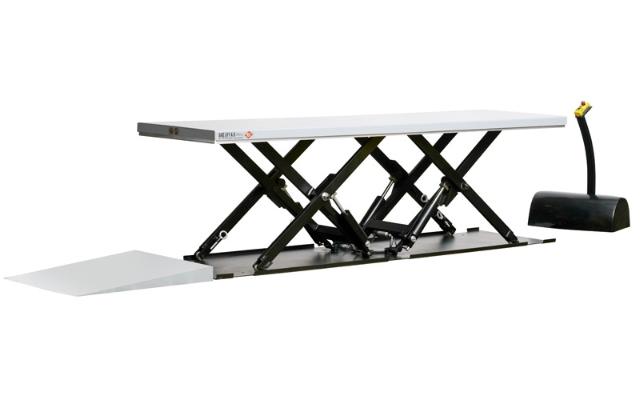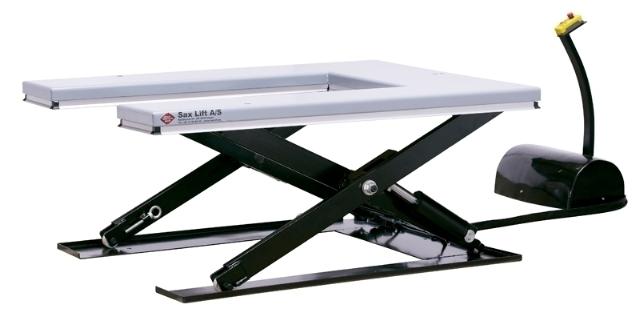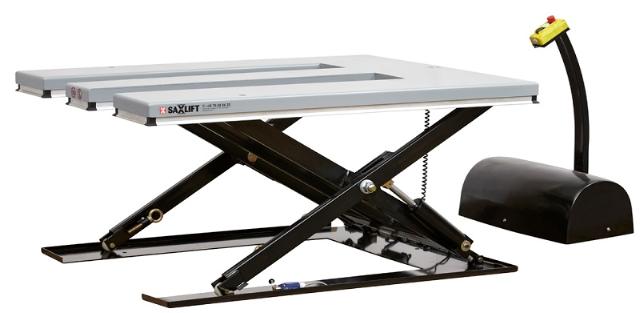Low profile scissor lift tables
Low Profile Scissor Lift Table for Enhanced Efficiency
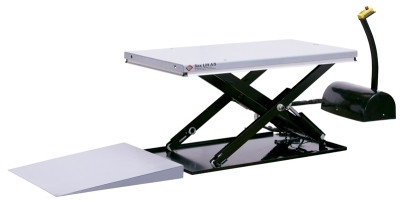
Integrating a Low Profile Scissor Lift Table into daily operations can significantly improve efficiency across many industries. These tables are distinct as they manage substantial loads while offering a minimal closed height, ensuring smooth and straightforward integration into almost any workspace. For instance, models such as the ICB500-230V and the ICB1000 have capacities ranging from 500 kg to 2500 kg, making them suitable for a variety of heavy-duty applications. The low closed profile of these tables results in minimal installation requirements, as they can be used without the need for a pit or significant modifications to existing workflows. For more information about available solutions, visit the Low Profile Scissor Lift Table page.
The Low Profile Lifting Table uses a reliable scissor lift mechanism, delivering stable and controlled vertical movement. This stability is crucial for safe and precise material handling operations. Whether considering the compact ICR500 or the robust ICB2500, each table is engineered for efficient space utilization while sustaining high performance. Their versatility enables them to play an indispensable role in environments such as warehouses, manufacturing facilities, and assembly lines.
What is a Low Profile Scissor Lift Table
A Low Profile Scissor Lift Table is a type of lifting equipment characterized by a scissor-like mechanism that allows the platform to raise or lower loads. Its defining feature is its reduced closed height, which enables loading and unloading at near ground level. This quality makes it ideal for operations where pit installation is impractical or space is at a premium. Such tables are often deployed in scenarios requiring frequent lifting tasks, and they excel in environments that demand ergonomic and efficient material handling solutions. Low Profile Lifting Tables stand out for their adaptability to various industrial settings and floor plans, making them a go-to choice for many organizations seeking to streamline material movement and processing. If your workflow requires a traditional or vertical approach, detailed information on vertical scissor lift tables is also available for comparison.
How Does a Low Profile Lifting Table Work
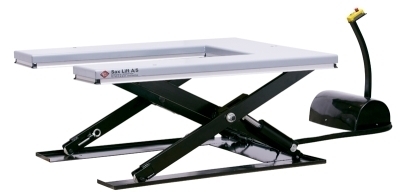
The fundamental design of a Low Profile Lifting Table involves crisscrossing metal supports arranged in a scissor formation. The device uses a hydraulic or electric system to actuate the scissor arms, smoothly elevating the platform to the desired height. The hydraulic system operates with fluid under pressure, which pushes the scissor arms apart, raising the surface in a controlled manner. Conversely, retracting the hydraulic flow allows the platform to lower safely. Some tables employ electric actuators for quieter, energy-efficient performance. The entire mechanism is engineered for both stability and controlled operation, minimizing the risk of sudden movements and heightening workplace safety. Overall, the Low Profile Scissor Lift Table provides an efficient solution for moving materials between different elevations, supporting productivity and reducing manual strain.
In terms of operation, the low entry height is especially advantageous when loading items directly from the ground with a pallet jack or hand truck, eliminating the need for ramps or deep pits. This capability is fundamental for ensuring quick and safe turnover in busy environments, from assembly lines to logistics centers.
Applications of Low Profile Scissor Lift Table in Industry
The Low Profile Scissor Lift Table is engineered for multifaceted tasks across various sectors. Its unique capabilities make it vital for businesses focused on streamlined, safe, and ergonomic handling of materials. These tables are widely utilized in:
- Warehousing, where they simplify loading and unloading materials, reduce manual labor, and speed up order fulfillment.
- Manufacturing, where height adjustability supports workers on assembly lines, reducing fatigue and optimizing productivity.
- Automotive settings, facilitating elevated access for tasks like maintenance, inspection, and repairs, thus improving workflow safety and accuracy.
- Distribution centers and logistics hubs, where the Low Profile Lifting Table enables rapid goods transfer in space-constrained areas.
With the ability to function in tight spaces and adapt to diverse tasks, these tables are considered essential for operational efficiency wherever repetitive lifting and height adjustment are required.
Advantages of Using a Low Profile Scissor Lift Table
The main advantage of the Low Profile Scissor Lift Table is its compact work profile, which simplifies integration into new or existing workflows. Because it features a reduced closed height, operators can easily slide heavy loads onto the platform without needing special pits or additional lifting apparatus. This not only saves on implementation time but also reduces modifications to existing facilities. Ergonomics play a key role as the table lowers manual handling, thereby minimizing workplace injuries due to lifting or awkward posture. For those seeking different platform sizes or capacities, explore the wide range of single scissor lift tables for other tailored solutions.
Another notable benefit is the table’s precise load positioning capabilities. Operators can adjust working heights for individual tasks or user preferences, which results in increased output and better adaptation to fluctuating requirements. Furthermore, advanced models, such as the ICB1000, are equipped to handle substantial weights, demonstrating strength and durability in demanding environments. By reducing physical strain and streamlining workflow, a Low Profile Lifting Table can lead to increased productivity, improved safety, and long-term operational savings.
Types of Low Profile Scissor Lift Tables
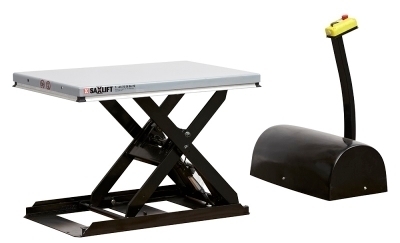
There are various iterations of Low Profile Scissor Lift Table available to address different needs. Some models are designed for ultra-low platform heights, while others focus on maximizing platform dimensions or increasing lifting capacity for specific industrial operations. For example, compact models, like the ICR500, are suitable for smaller workshops, while heavy-duty variants such as the ICB2500 serve large-scale production lines and logistics hubs. Certain tables are powered by hydraulics, offering robust lifting strength, whereas electric versions present quieter operation with an emphasis on energy conservation. Many models feature optional accessories such as safety rails, overload protection systems, and remote controls to support safe, efficient, and user-friendly operation.
How to Choose the Best Low Profile Scissor Lift Table
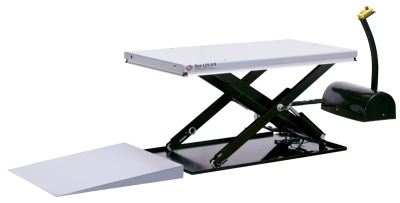
Selecting the right Low Profile Scissor Lift Table requires a thorough understanding of specific operational criteria. Begin by evaluating the maximum load capacity appropriate for current and anticipated tasks. For instance, facilities managing loads up to 1000 kg might opt for a table like the ICB1000, ensuring that no overloading occurs during intensive operations. Equally important are length and width of the platform, as these dictate the types of items the table can safely accommodate. Ergonomic considerations, such as lift height range and user controls, will further influence the choice, as these can impact worker comfort and system adaptability.
Another critical factor is the lift mechanism type. Hydraulic lifts offer robust performance for handling heavy weights and are commonly found in demanding industrial settings. Electric Low Profile Lifting Tables, by contrast, are better suited for quieter, energy-conscious operations indoors.
Load Capacity Considerations for Low Profile Scissor Lift Table
Accurately determining the load capacity required for a Low Profile Scissor Lift Table is essential for both operational efficiency and workplace safety. Each model is rated according to its maximum safe working load, which should not be exceeded to prevent equipment strain or potential accidents. Facilities must carefully measure the weight of typical loads and account for any exceptional tasks that may demand higher capacity. For example, a production line with regular 500 kg shipments requires at least a table of comparable rating, such as the ICB500-230V, whereas a warehouse managing heavier items might select the ICB2500 with a 2500 kg capacity.
Consider the frequency of use, as repetitive heavy lifting will affect wear and durability. Forward-thinking managers often anticipate future volume increases and select models that offer some excess capacity, ensuring longevity and adaptability while maintaining safe operation according to established industry standards.
Hydraulic versus Electric Low Profile Scissor Lifting Table
When comparing hydraulic and electric Low Profile Scissor Lift Tables, it is important to weigh the operational environment and functional needs. Hydraulic tables are characterized by their robust structure and capability to manage the heaviest loads, representing a solid choice for industrial workshops and production lines. They tend to provide smoother lifting transitions but may require more periodic maintenance.
Electric Low Profile Lifting Tables, on the other hand, excel in environments where operational noise must be minimized, such as laboratories or food processing facilities. They operate cleanly, efficiently, and tend to have lower long-term maintenance requirements. Selecting between these systems involves assessing factors including noise level, total operating hours, maintenance schedules, and energy usage preferences. For additional information about hydraulic systems, see the dedicated hydraulic lift tables page.
Deciding on Table Size and Model
Proper fit of a Low Profile Scissor Lift Table within the operational setting ensures efficiency and safety. Key variables include the size of the goods or pallets to be moved, ensuring the platform dimensions align with item contours. For larger pallets, models such as the ICB2500 offer an appropriately wide and stable platform. The total vertical travel required to meet production or assembly line heights must also be factored in, so the table consistently meets workspace requirements with ease. Consider the available floor space, as some work environments may limit the footprint of material handling equipment.
Typical selection criteria include compatibility with conveyor systems, storage racking, or integrated processing lines, which ensures seamless movement of materials between stages of production or shipping. Choosing the most suitable model enhances workflow without unnecessary disruption or risk of bottlenecks.
Safe Operation of Low Profile Scissor Lift Tables
Ensuring safe operation of any Low Profile Scissor Lift Table encompasses both robust mechanical features and comprehensive operator training. Built-in safeguards, such as non-slip platforms, overload protection, and emergency stop functions, are critical for minimizing the risk of workplace incidents. Operators must receive thorough, role-specific training focusing on maximum load ratings, correct platform positioning, and actions to take during malfunctions.
Routine pre-use checks are important, including inspection of hydraulic lines for leaks, testing emergency stop mechanisms, and confirming all guardrails are secure. These measures guarantee that the table performs according to intended safety standards, upholding regulatory requirements and keeping personnel protected.
Common Safety Features of Low Profile Lifting Tables
Most Low Profile Scissor Lift Tables are equipped with specialized features designed to protect both operators and equipment. For example, non-slip surfaces are essential for worker stability during loading and offloading, particularly in fast-paced environments. Overload protection limits table operation if weight thresholds are exceeded, while safety rails reduce the likelihood of falls from elevated platforms. Emergency stop buttons placed within easy reach allow for rapid response should an unforeseen issue occur, adding another layer of operational safety. Consistent adherence to these technical and procedural safeguards enhances reliability and reduces the likelihood of workplace injuries.
Comparing Low Profile and Standard Scissor Lift Tables
The principal differentiator between a Low Profile Scissor Lift Table and a standard scissor lift model is the minimum platform height achievable when fully lowered. Low profile versions, like the ICB500-230V, can reach closed heights as low as 85 mm, making them suitable for direct ground-level loading. Standard models, by contrast, may require installation in a pit to achieve similar levels of accessibility, adding time and cost to setup.
Low Profile Lifting Tables also save valuable workspace due to their design, allowing them to fit into areas where a conventional lift would be difficult to install. Despite their reduced size, they maintain impressive lifting capacities. For example, the ICB1000 can lift up to 1000 kg, rivaling some larger models in performance. These attributes make them a favored solution for dynamic, space-limited settings where frequent load transfer is needed. Those considering a more customized approach can find tailored solutions through customized lift tables as well.
For operations comparing which system to employ, it is essential to evaluate accessibility needs, load weight, available floor space, and necessity for installation modifications. This assessment ensures the chosen table delivers optimal efficiency and ongoing ergonomic benefits, supporting safe and streamlined material movement on a daily basis.

